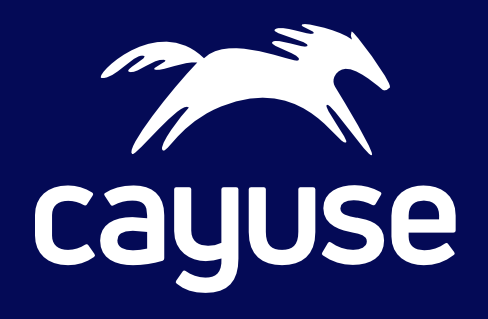DURC and PEPP Compliance
UPDATE: An Executive Order was issued on May 5, 2025, calling for the USG DURC-PEPP Policy to be revised or replaced within 120 days and outlined action items in the revision/replacement policy. Additional information will be posted as it becomes available.
Full text of the Executive Order: https://www.whitehouse.gov/presidential-actions/2025/05/improving-the-safety-and-security-of-biological-research/
Fact sheet regarding the Executive Order: https://www.whitehouse.gov/fact-sheets/2025/05/fact-sheet-president-donald-j-trump-achieves-improved-safety-and-security-of-biological-research/
On May 6, 2024, the US Office of Science and Technology Policy (OSTP) released a new policy for Oversight of Dual Use Research of Concern (DURC) and Pathogens with Enhanced Pandemic Potential (PEPP). This policy supersedes previous DURC policies from 2012 and 2014, as well as the 2017 PC3O Framework. Within the Texas Tech Office of Research & Innovation, the Biosafety Office and Office of Research Services are working to update existing policies and framework to comply with the requirements of the new policy. The policy is effective as of May 6, 2025, and as of this day, Texas Tech University must review current and future life sciences research and proposals and determine if they are subject to the policy.
The Texas Tech University Institutional Biosafety Committee (IBC) will serve as the Institutional Review Entity (IRE) for research under the US DURC-PEPP Policy at Texas Tech. The new policy is an expansion of the existing charge of the IBC to oversee DURC work at Texas Tech. The policy will be administered by the existing Biosafety Program and IBC infrastructure. Presently, it is uncommon for research at Texas Tech to be regulated under the USG DURC-PEPP Policy.
The resources here will guide you through DURC workflows and provide useful tools and contacts. This page will be updated frequently as resources become available.
Definitions
What is considered a "biological agent"?
In the scope of the USG DURC-PEPP Policy, “Biological agents” are any microorganism (including, but not limited to, bacteria, viruses, fungi, or protozoa), infectious material, or any naturally occurring, bioengineered, or synthesized component of any such microorganism or infectious material, capable of causing:
- Disease and/or death, or other biological malfunction in a human, an animal, a plant, or another living organism;
- Deterioration of food, water, equipment, supplies, or material of any kind; or
- Deleterious alteration of the environment.
What is DUR?
“Dual use research” is research conducted for legitimate purposes that generates knowledge, information, technologies, and/or products that can be utilized for benevolent or harmful purposes.
What is DURC?
“Dual use research of concern (DURC)” is life sciences research that, based on current understanding, can be reasonably anticipated to provide knowledge, information, products, or technologies that could be misapplied to do harm with no, or only minor, modification to pose a significant threat with potential consequences to public health and safety, agricultural crops and other plants, animals, the environment, materiel, or national security.
What is the IRE?
“Institutional review entity (IRE)” is the entity established by the research institution to execute the institutional oversight responsibilities described in Section 5.2, with the attributes described in Section 5.2.B.
What is a PPP or an PEPP?
“Pathogen with pandemic potential (PPP)” is a pathogen that is likely capable of wide and uncontrollable spread in a human population and would likely cause moderate to severe disease and/or mortality in humans.
“Pathogen with enhanced pandemic potential (PEPP)” is a type of pathogen with pandemic potential (PPP) resulting from experiments that enhance a pathogen’s transmissibility10 or virulence, or disrupt the effectiveness of pre-existing immunity, regardless of its progenitor agent, such that it may pose a significant threat to public health, the capacity of health systems to function, or national security. Wild-type pathogens that are circulating in or have been recovered from nature are not PEPPs but may be considered PPPs because of their pandemic potential.
What does "reasonably anticipated" mean?
“Reasonably anticipated” describes an assessment of an outcome such that, generally, individuals with scientific expertise relevant to the research in question would expect this outcome to occur with a non-trivial likelihood. It does not require high confidence that the outcome will definitely occur but excludes experiments in which experts would anticipate the outcome to be technically possible, but highly unlikely.
Responsibilities
Who is responsible to determine if research is subject to the DURC & PEPP Policy?
In short - Principal Investigators (PIs). A PI is responsible for the initial assessment of their current and proposed research to identify if their work falls under this policy.
- If the PI assessment indicates current or proposed work meets the definition of Category 1 or Category 2 Research, the PI must notify the sponsor and the IRE.
- If the PI assessment indicates current or proposed work does NOT meet the definition of Category 1 or Category 2 Research, the PI is responsible fore continually assessing their work for any changes that may alter the initial determination.
How do PIs determine if work qualifies as Category 1 or Category 2 Research?
PIs can use the PI Assessment Tool in the proposal phase or at any time there after to assess their work under the USG DURC-PEPP Policy. (Link to cloud-based assessment coming soon! Email ibc.ehs@ttu.edu for a hard copy of the assessment.)
content under construction
A3
content under construction
A4
content under construction
A5
Resources
References
United States Government Policy for Oversight of Dual Use Research of Concern and Pathogens with Enhanced Pandemic Potential (US DURC-PEPP Policy)
Implementation Guidance for the United States Government Policy for Oversight of Dual Use Research of Concern and Pathogens with Enhanced Pandemic Potential (Implementation Guide)
Administration for Strategic Preparedness & Response (ASPR) S3: Science Safety Security homepage
ASPR S3: Science Safety Security FAQs
TTU OP 74.05 Institutional Biosafety Committee
Tools
DURC-PEPP Workflow
PI Assessment
Contacts
Where can I reach out with questions?
Please contact the IBC Office by email with any questions regarding agent classification or program administration: ibc.ehs@ttu.edu
Environmental Health & Safety
-
Address
Texas Tech University, 407 Flint Ave, Lubbock, TX 79409 (Mail Stop 1090) -
Phone
806.742.3876 -
Email
safety@ttu.edu

